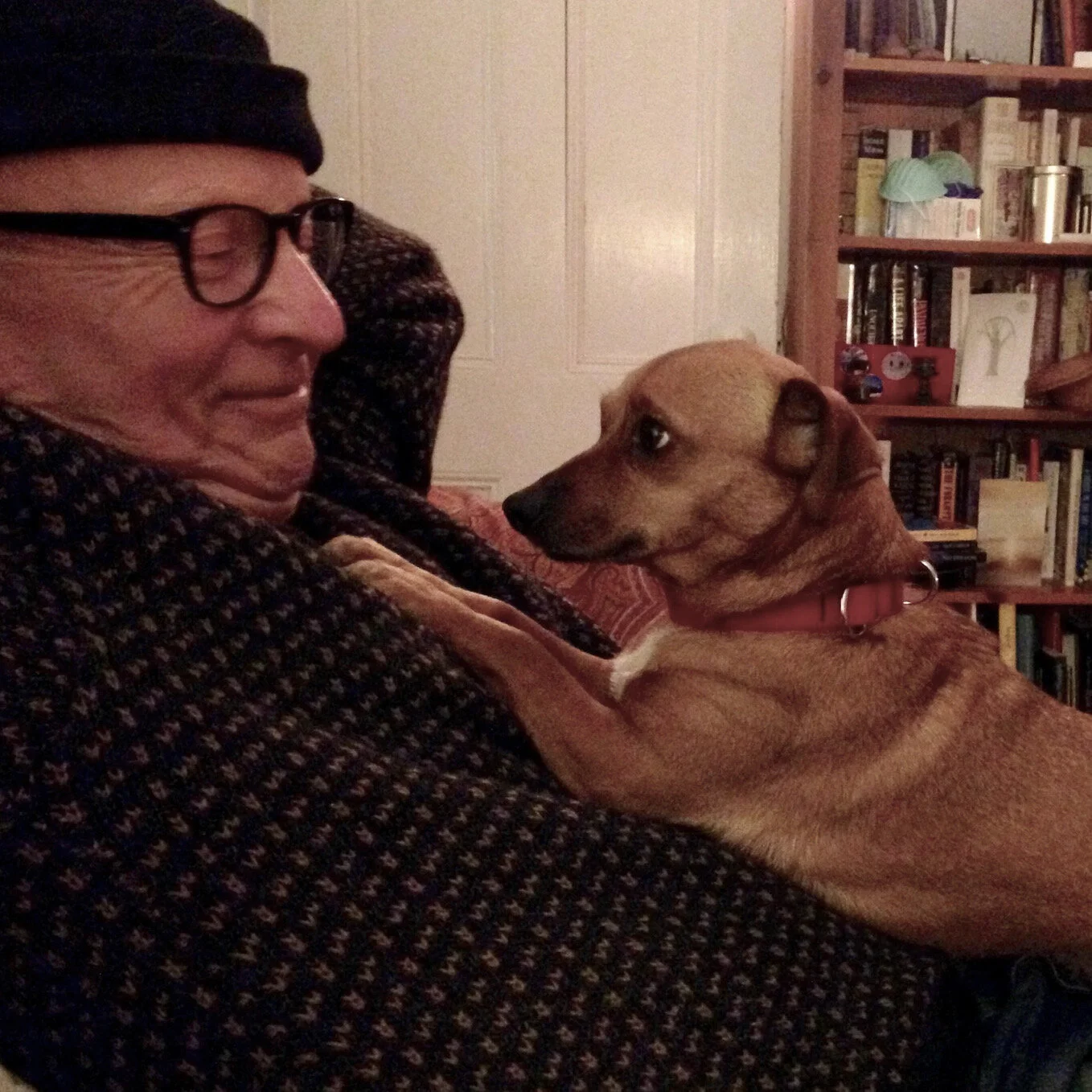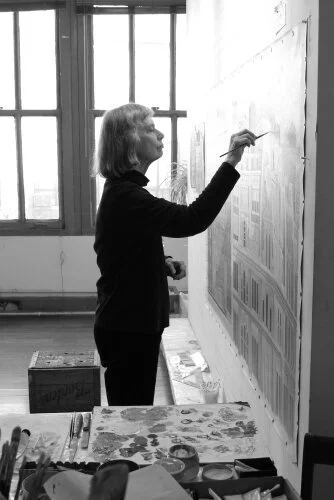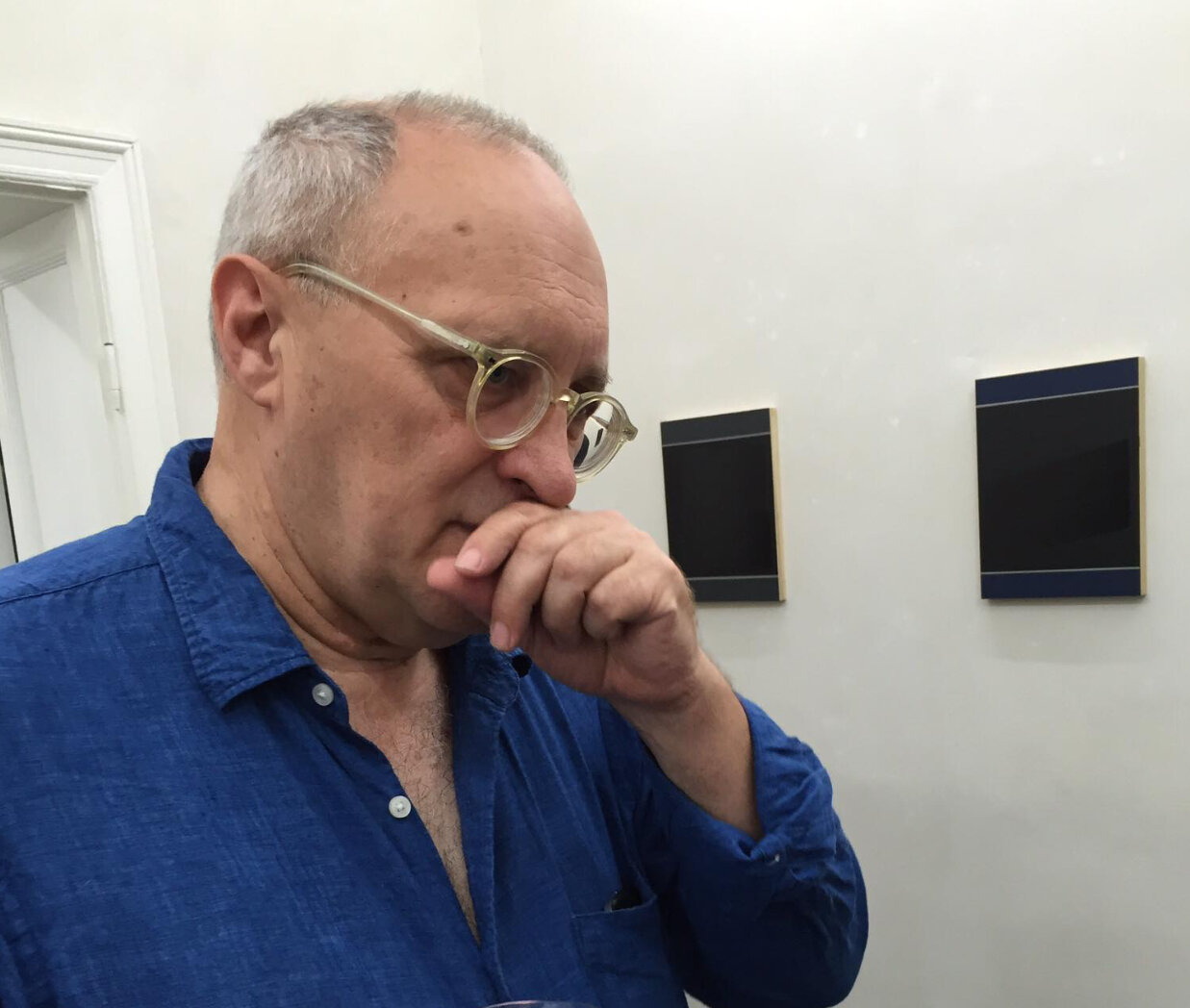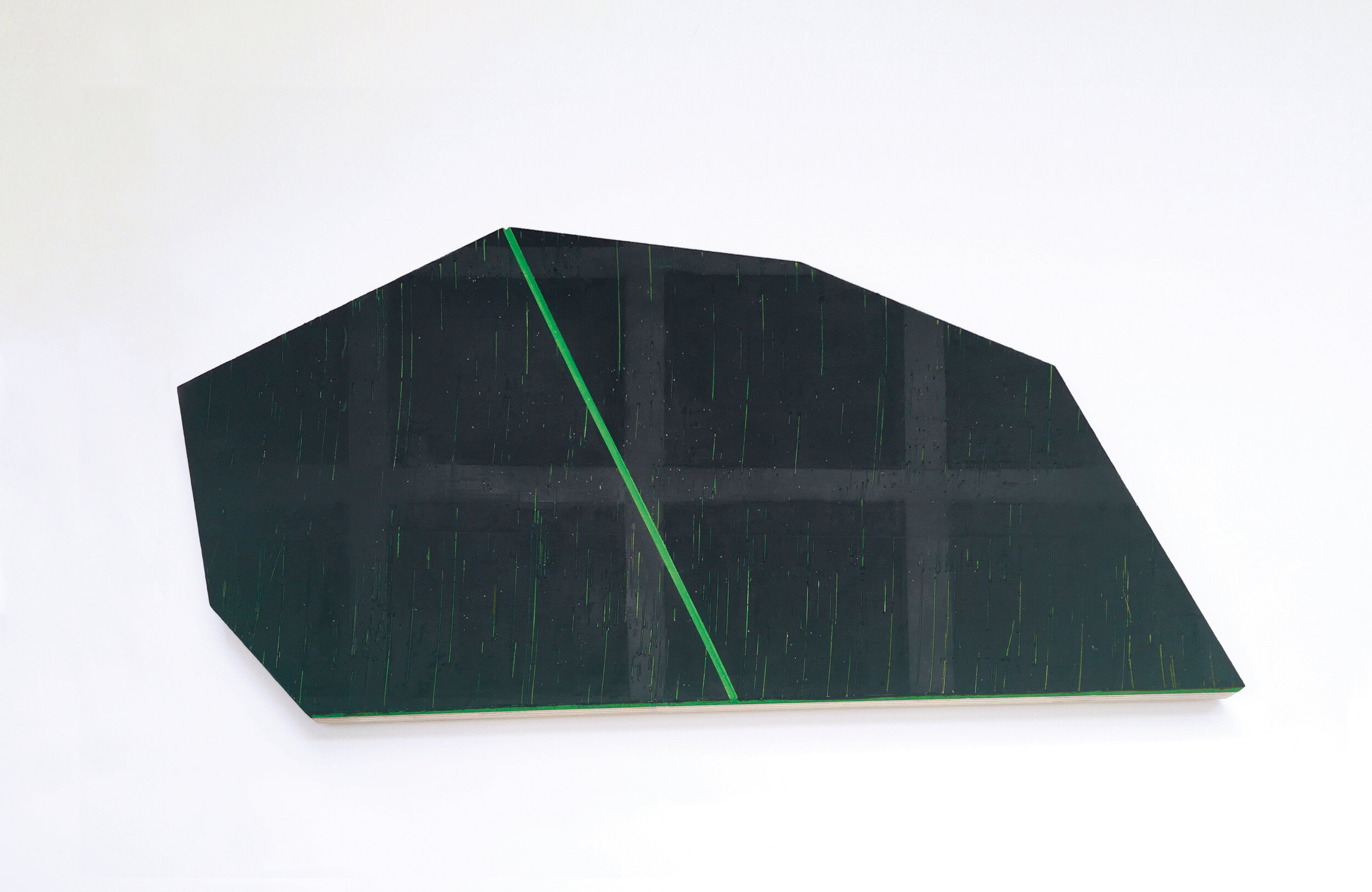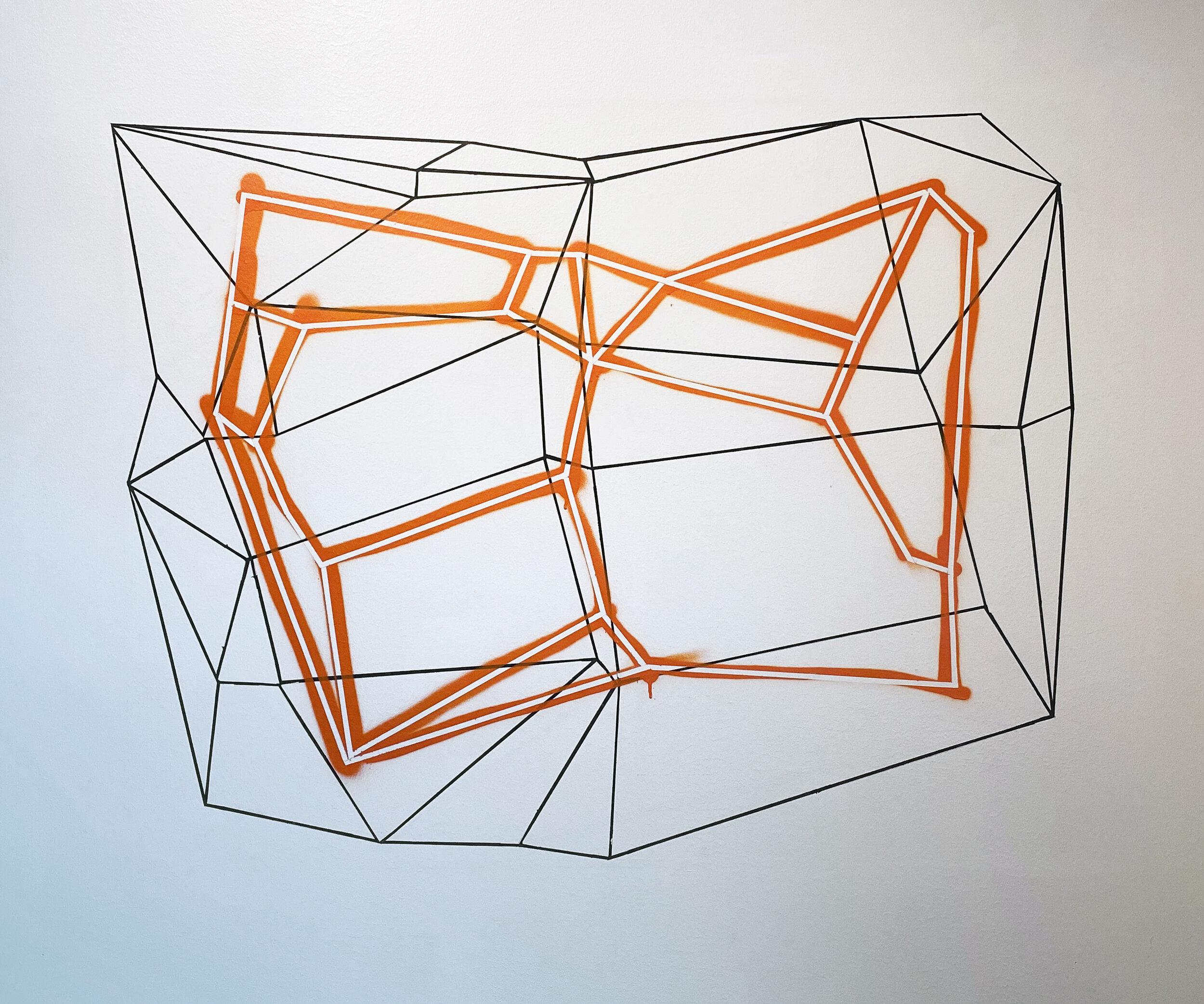Here & There
Curated by David Row

David Row, Red X (2021)
July 15 - September 11, 2021
Opening Reception, July 15th, 5-7 p.m.
About The Show
The idea is to bring together another generation of artists that continues the long connection between Maine and the New York art world.
- David Row, curator
Since the early 1800s, artists have been drawn to Maine for its rugged coastline, its mysterious, primeval-feeling forests, and its magnificent quality of light. Later, Modernists such as Marsden Hartley, John Marin, Max Weber, and Marguerite and William Zorach made their summer homes here, establishing a trend that continued, post-World War II, when Maine became an annual destination for New York artists seeking respite and rejuvenation from the grit and the fast-flashing pace of the city. This exhibition, featuring the work of 16 established New York-and-Maine artists, celebrates this long-standing and ongoing connection.
Read the review HERE.
Featured Artists
David Row is an abstract painter and object maker interested in the complex relationship between the viewer and the painted object and in the object’s relationship to the architecture it inhabits.
Bell’s is a kind of darkly romantic vision, often northern in nature. Employing acrylic, photomontage and other means and mediums, over the years she has created a body of work that embraces enigma even as it represents the truth of her perceptions... Bell’s paintings are all about light and they are romantic in that regard, at times almost Luminist…
~ Carl Little
Hyperallergic
New York-based Katherine Bradford (b.1942) paints luminous fields of color filled with people in action or in repose–often swimming, diving or floating. Bradford paints with a formal inventiveness and a shifting sense of figure and ground, giving narrative weight to her characters who may appear as heroes or lovers, families or couples, Her chromatic scenes, painted in many transparent layers of acrylic, transmit a light-filled quality and offer metaphorical possibilities as they veer between humor, pathos and abstraction.
I am trying to construct some things that, when you look at them, you begin to see a very complex interactive space where you’re not really sure what’s happening, where things are changing in front of you and you’re not really sure why….flip and flop on you.
~ William Conlon
While Greenleaf’s work is sophisticated and tips its historically savvy hat to modernist pioneers such as Kazimir Malevich (the Russian best known for his iconic “Black Square”), Greenleaf’s work is primarily dedicated to the viewer’s immediate experience….Greenleaf’s work always does something. Sometimes his geometrically abstract forms flutter. Sometimes they set your eyes to follow their crackling circuits. And sometimes they fold and furl with the pulsing rhythms of intimate mental engines.
~ Dan Kany
Portland Press Herald
Charlie Hewitt is nationally known for his dynamic, imaginative paintings, sculpture, prints, and neon constructions. His work is in the collections of the Metropolitan Museum of Art, Whitney Museum of American Art, the Museum of Modern Art, the Library of Congress, Portland Museum of Art, and Bates College Museum of Art.
Jacquette has been painting landscapes from extreme elevations for decades. A native of Pittsburgh raised in Stamford, she settled in New York City in the 1950s. She has been exhibiting in solo shows ever since. Like her late husband, the artist and filmmaker Rudy Burckhardt, she is captivated by the variability of the metropolis as well as the vacancies glimpsed even within its crowdedness. She remains dedicated to viewing moments of incompleteness from unusual and wide-ranging angles.
~ Tim Keane
Hyperallergic
As she finds ways to overcome the formal structure of composition, Kahn has introduced new elements by increasing the active field with surface variables in relation to their interlocking rotation of curvilinear and rectilinear forms. Unlike the cubist imitation of real surfaces such as wood grain, marble, and wallpaper motifs, Kahn’s application of the technique belongs solely to the language of painting: cross hatching, stippling, ripping, abstract patterning, or simply mark making.
~ Tomassio Longhi
Brooklyn Rail
David Kapp is best known for his paintings of the contemporary urban landscape. His paintings have been described by Ken Johnson in the New York Times as having "a dreamy, mildly hallucinatory air and a mood of Hopperesque melancholy," reflecting the harsh kinetic beauty of the city itself.
Maine implies by omission that the intaglio of gouges and markings with which he incises his Styrofoam plates, while perhaps hands-on, is by no means invested with the mystic graphology of Cy Twombly, or with the elegant violence of Lucio Fontana. Rather, the artist seems to be cultivating the “calculated crappiness” (as he put it in a recent rave review of Ryan Crotty’s process-oriented abstractions) which helps “avoid the slick seamlessness that sucks the life out of so many pseudo-minimalist paintings, and gives reductivist pictorial strategies everywhere a bad name.
~ David Brody
Artcritical
My work has been influenced by natural phenomena such as radically changing atmosphere, tides and geological surfaces (both above and below the waterline), wind circulation, plate tectonics and Landsat images.
~ Nancy Manter
A feeling of punkish, wayward survival is conjured in the comingling of translucent veils, tattered plastic, and off-the-shelf glamour of reflective film. And pervasively, the cryptic, constructivist abstraction that presents itself without artifice keeps hidden in plain sight its uneasy heart.
~ John Mendelsohn
d'Art International Magazine
Roeth, who is based in Beacon, New York State, has been described as “…probably the best color painter in New York” by American critic Michael Brennan. He has exhibited extensively and his work is in many important collections, including the Kunstmuseum Basel; the Fogg Art Museum (Harvard); the San Jose Museum of Contemporary Art and the celebrated Panza Collection where his paintings form a site-specific installation in one of the gilded and panelled rooms of the C17th Palazzo Ducale di Sassuolo in Varese, Italy. Winston Roeth had a solo show at Ingleby Gallery in Spring 2011.
Claire Seidl works in oil on nubby linen with a kind of all-over compositional approach. The deep saturation of her color is elaborated by the deep sensuality of her material, as the luscious oil is massaged, scraped and pressed into the linen creating a pervasive tension between surface and color. Her configurations evolve out of this process -- organic amalgams of lines and shapes that vibrate and absorb into the resonance of the whole.
~ Steven Alexander Journal
Beginning in 2012, Peter Soriano’s work became dominated by large-scale, graffiti-like wall paintings made of acrylic and spray paint, carried out on the basis of written instructions, as well as related drawings made on pleated Japanese paper. In poet and art critic John Yau’s words: “Simply put, Soriano has become a sculptor who doesn’t make objects.”
Voisine has spent decades refining a personal language with striking compositions of color and geometry that are more than the sum of their parts.
~ Lori Ortiz
Live Mag!
Preview the Exhibition
Mosquito netting, lenticular plastic, metal, Denril, thermal foil, polyester mesh, plastic garbage bags & ties, Mylar, acrylic paint, Velcro, staples, eyelets, T-pins
108” x 49” x 27”
$7,000
Mosquito netting, lenticular plastic, metal, Denril, thermal foil, polyester mesh, plastic garbage bags & ties, Mylar, acrylic paint, Velcro, staples, eyelets, T-pins
108” x 49” x 27”
$7,000
Mosquito netting, lenticular plastic, metal, Denril, thermal foil, polyester mesh, plastic garbage bags & ties, Mylar, acrylic paint, Velcro, staples, eyelets, T-pins
108” x 49” x 27”
$7,000
Kremer Pigments and Polyurethane Dispersion on MDF Panel
34” x 34”
$16,000




